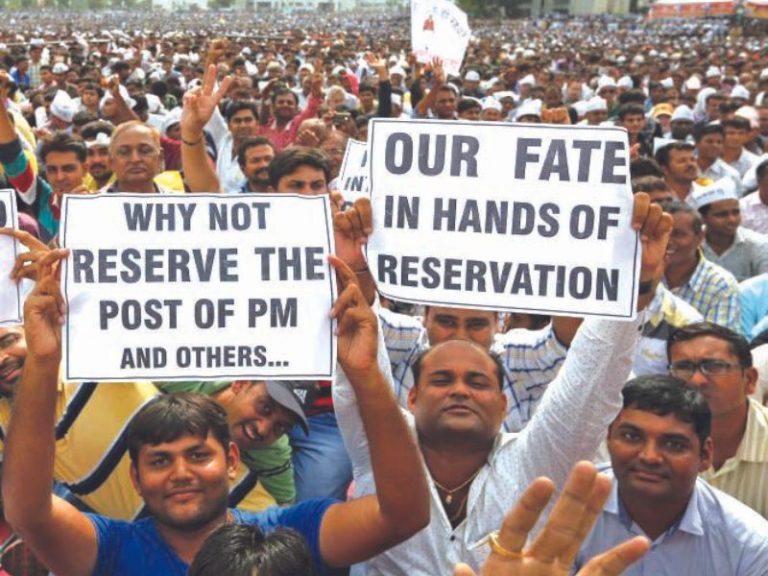Delhi: Quota upon quotas

In a landmark 3-2 majority judgement delivered on November 7, the Supreme Court of India upheld the 103rd Constitutional Amendment, 2019, under which the BJP government at the Centre introduced additional 10 percent reservation in public higher education institutions (HEIs) and government jobs for economically weaker sections (EWS) from the general category.
To appreciate the historic import of the apex court’s judgement in Janit Abhiyan vs. Union of India (Writ Petition (Civil) N.55 of 2019) aka the 103rd Amendment case, it’s important to note that under Article 14 of the Constitution of India, the State is prohibited from denying any person equality before the law or the equal protection of the law within the territory of India. Moreover, Article 15 prohibits the State from denying access to public spaces and education institutions on the grounds of race, gender, religion, caste etc. Similarly, Article 16 prohibits government from denying public employment to citizens on the basis of religion, caste, gender, race or place of birth.
However after much debate the Constituent Assembly comprising eminent lawyers, including Dr. B.R. Ambedkar, widely revered as the prime author of the Constitution, carved out exceptions to Article 15 and 16 and authorised the State to practice positive discrimination in favour of lowest castes and tribes who had suffered centuries of humiliation, degradation and systemic denial of socio-economic upward mobility. Accordingly 15 percent of capacity in public higher education institutions and government employment was reserved for scheduled castes (SCs) and 7.5 percent for scheduled tribes (STs) oppressed under the immutable Hindu varna caste system.
But to safeguard development of post-independence India into an egalitarian society in which merit would be the sole criterion for socio-economic advancement, all reservations were to be abolished after ten years of promulgation of the Constitution on January 26, 1950. However, for political and electoral reasons, reservations for SCs and STs have never been removed.
On the contrary in 1992 after the Mandal Commission report (1980) determined that OBCs (other backward castes) constitute 52 percent of the national population and have also been historically oppressed and denied upward mobility by the impregnable caste system, they were awarded an additional 27 percent reservation in education and Central and government employment. However in 1992 in Indra Sawhney’s Case, in the cause of institutional efficiency and merit-based admissions and recruitment, the Supreme Court imposed a 50 percent ceiling on reservations.
Despite this cap, responding to a demand from the EWS (economically weaker sections) within the general category, in 2019 the BJP government at the Centre further amended Articles 15 and 16 to reserve 10 percent quotas in education institutions and government employment for citizens excluded from SC, ST and OBC quotas.
“With several studies indicating inequality between the richest and poorest sections of society is widening, reservations in education and well-paid government jobs for hitherto excluded EWS has become necessary. Hence the reservation policy for economically weaker sections is welcome,” says Jandhyala B.G. Tilak, former professor and vice chancellor of National Institute of Educational Planning and Administration (NIEPA), Delhi.
Unsurprisingly, the BJP leadership which rushed this amendment in January 2019 on the eve of the General Election to placate the small but influential middle class denied quotas in education and public employment, is delighted. “Constitutional validity to 10 percent quota for EWS will open up new doors of opportunities for the economically weaker sections, especially in admission to HEIs and Central government jobs. This will further strengthen social justice in the spirit of sabka sath and sabka vikas,” tweeted Union education minister Dharmendra Pradhan on November 7 in response to Supreme Court judgment.
Curiously the 399-page majority judgement of the Supreme Court is silent on the issue of merit and efficiency in higher education and government — the rationale for imposition of the 50 percent ceiling in Indra Sawhney’s Case.
Evidently, the learned judges meticulously interpreting finer points of law in the ivory tower of the apex court seem unaware that of India’s 1,041 universities — some of over 150 years vintage — none is ranked among the authoritative Top 200 World University Rankings of QS and Times Higher Education, while a dozen Chinese universities are. Nor do they seem aware that sloth, corruption and inefficiency in government ministries and offices is going from bad to worse (see editorial p.14).
Read: SC upholds validity of 103rd Constitution amendment providing 10 per cent reservation to EWS

















Add comment